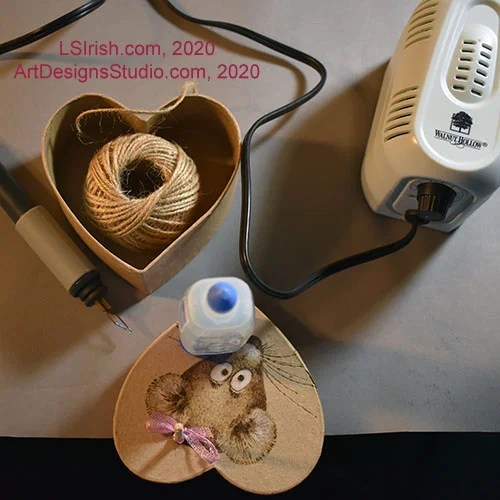Pyrography Cleaning Graphite Tracing Lines
September 15, 2020
This morning I am working on getting your supply list ready for the Feathered Green Man Leather Journal Pyrography Project and came across a few photos on how to clean the graphite tracing lines from your wood burning project that I thought I would share.
I prefer to either use a graphite tracing paper or graphite pencil lead rubbed over the back of my pattern my paper as my tracing media. Graphite leaves a pale to medium gray line on our working surface that has no oil or wax, and therefore is not a permanent marking.
I do like to remove those tracing lines as early in the burning as is reasonable and will even do an extremely pale tonal value burned line before any shading work is done just so that I can erase the graphite right away.
A white artist eraser works wonderfully for wood and gourds. These are our rougher wood burning surfaces. Do not use an eraser that has any coloring ( that pink one on the end of your bright yellow #2 pencil) to it as the color dye can rub off onto your project.
An architect’s eraser pad – a fine mesh cloth bag filled with eraser grindings – is perfect for our finer medias as paper, leather, and chipboard (paper mache). Since the eraser bag is flexible it works well for wood carvers that want to remove any carbon build-up from their wood burning details on the carving.
A dry ‘Magic’ eraser not only removes the graphite lines from your leather or wood project, it also picks up any oil and dirt that has been left from moving your hand across the surface.
In the photo sample above, Feathered Green Man Leather Journal Pyrography Project, I first cleaned the graphite tracing using my Architect’s eraser pad. Then I followed up with a light cleaning using the dry ‘Magic’ eraser … and,wow!, was I surprised at how much more dirt I picked up …
That ‘Magic’ eraser is now a permanent addition to my pyrography tool kit.
Pyrography Cleaning Graphite Tracing Lines Read More »

























